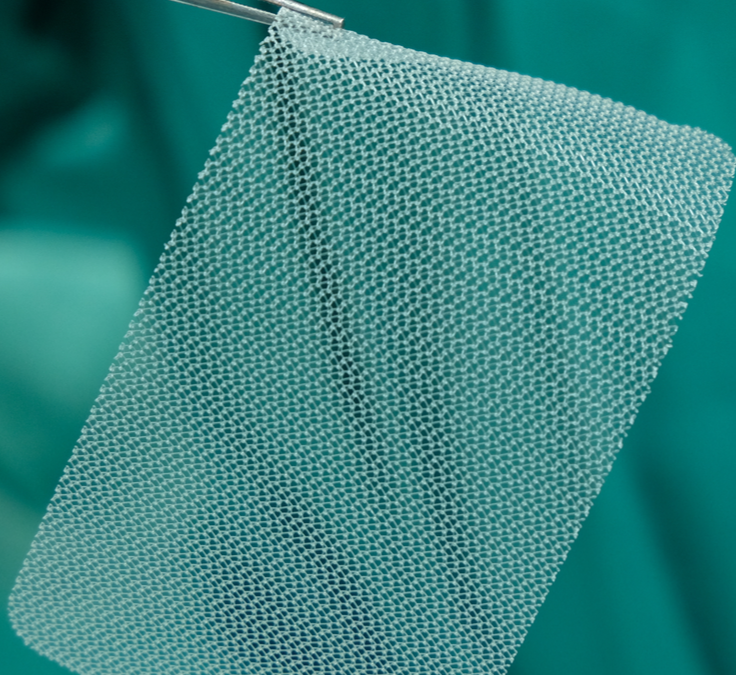Hernia Mesh Recall
Hernia mesh manufacturers have recalled more than 211,000 units of hernia mesh from 2005 to March 2018. Manufacturers recalled the hernia mesh after people reported failures and organ injuries following surgery. The U.S. Food and Drug Administration blamed recalled mesh for some of the worst complications.
Hernia mesh manufacturers recall their products if they discover a problem. Hernia mesh manufacturers recalled more than 211,000 units of hernia mesh from 2005 to March 2018.
At least one manufacturer pulled a brand off the market after high failure rates. Companies also recalled hernia mesh after doctors and patients reported other serious complications.
The U.S. Food and Drug Administration tracks reported hernia mesh complications. The FDA said that recalled mesh was “the main cause” of bowel perforation and obstruction seen in those patients. Bowel perforation and obstruction are some of the worst complications of hernia mesh.
Reasons for Hernia Mesh Recalls
The FDA has announced several manufacturer recalls in recent years.
Some recalls were for packaging errors. But others were for serious complications. These included organ perforation and adhesion.
The agency issued a safety communication on hernia mesh in 2014. It warned the public about hernia mesh complications.
The agency identified five of the most common complications from recalled mesh.
LAWSUIT INFORMATION
Hernia Mesh Brands Recalled
Companies that issued hernia mesh recalls include Atrium Medical, Bard Davol and Ethicon. The three companies have recalled more than 211,000 hernia mesh units since 2005.
| MANUFACTURER, DATES & UNITS | PRODUCTS | REASON |
|---|---|---|
| Atrium Medical Aug. 9, 2013 (145,251 units recalled) | C-QUR Edge Mesh C-QUR TacShield C-QUR V-Patch Mesh C-QUR Mesh (all sizes) | Improper packaging |
| Bard Davol Dec. 22, 2005 Expanded on Jan. 5 and Mar. 24, 2006 (31,761 units) | Bard Composix Kugel Mesh X-Large Patch Oval (various sizes) Bard Composix Kugel Large Oval, 5.4” x 7” Bard Composix Kugel Oval, 6.3” x 12.3” Bard Composix Kugel Large Circle, 4.5” | Potential of ring breaking and causing bowel perforation or fistula |
| Bard Davol Jan. 10, 2007(16,603 units) | Bard Composix Kugel Hernia Patch Large Oval with EPTFE, 5.4” x 7” Bard Composix Kugel Hernia Patch Large Circle with EPTFE, 4.5” | Potential of ring breaking and causing bowel perforation or fistula |
| Ethicon Dec. 21, 2005 (18,000 units) Oct. 18, 2010 (87 units from one lot) | Proceed Surgical Mesh | Potential to lose laminate coating. This can expose mesh to bowels and causing adhesions or bowel fistulization |
| Ethicon Feb. 19, 2014 (223 units from specific lots) | Proceed Surgical Mesh | Packaging defect cause delamination leading to potential adhesions |
| Ethicon May 27, 2016 (Market withdrawal: all units removed from global market) | Physiomesh Flexible Composite Mesh | High failure rates reported |
Hernia Mesh FDA Warnings
In 2015, the FDA asked a court for an injunction against mesh manufacturer Atrium Medical. Atrium manufactures C-QUR hernia mesh.
The agency said Atrium ignored repeated warnings about problems at its C-QUR factory. The injunction blocked C-QUR manufacturing and sales until Atrium fixed the problems.
The FDA blamed recalled mesh for complications people reported to the agency.
“Many complications related to hernia repair with surgical mesh that have been reported to the FDA have been associated with recalled mesh products that are no longer on the market”
C-QUR has been one of the most high-profile hernia mesh recalls in recent years. Ethicon’s Physiomesh Flexible Composite Mesh has been the other.
- 2006
FDA approved Atrium’s first C-QUR mesh products
- 2010
FDA approved Ethicon’s Physiomesh Flexible Composite Mesh
- 2012
FDA issued a warning letter to Atrium Medical. It said Atrium failed to address reported infections. The FDA also said that Atrium’s sterilization process was inadequate.
- 2015
Federal court granted FDA an injunction against Atrium. It ordered Atrium to stop distribution and manufacturing of medical devices from the company’s Hudson, New Hampshire, plant. The shutdown was in effect until Atrium complied with certain Federal Food, Drug, and Cosmetic Act provisions.
- 2016
Two, large European hernia registries reported higher than average failure rates for Physiomesh Flexible Composite Mesh.
- 2016
Ethicon issued a “market withdrawal” of Physiomesh Flexible Composite Mesh products.
- 2016
FDA analysis found that recalled mesh is responsible for some of the most serious complications.
- 2018
FDA averaged more than 500 adverse event reports per month for all types of surgical mesh. This included almost 300 reports for Physiomesh and 200 for C-QUR in the first three months of the year.
The FDA has different definitions for recalls and market withdrawals. Market withdrawals happen when the violation is not subject to legal action. Companies can take the product off the market or fix its violation. This way, manufacturers avoid a recall.
Hernia Mesh Lawsuits and Settlements Following Recalls
Patients who suffered hernia mesh injuries are suing mesh manufacturers. They claim that the mesh was faulty and poorly designed. The lawsuits accuse manufacturers of hiding the risks.
Most current hernia mesh lawsuits target Ethicon’s Physiomesh and Atrium’s C-QUR brands. Both are the subject of separate multidistrict litigations (MDLs). MDLs combine several similar lawsuits for efficiency.
Information Sited From https://www.drugwatch.com/hernia-mesh/recalls/
Tips To Avoid Work Zone Accidents
- Take the slow road. Most fatal work zone crashes happen on roads with speed limits over 50 mph. If you’re planning a long trip, check the traffic and construction reports for your planned route. If you can avoid the highway for a portion of your journey, you will greatly reduce your chances of an accident—and you may even reach your destination more quickly.
- Keep your eyes and ears open. Distractions are deadly while behind the wheel at all times, but are especially dangerous in a construction zone. If you see a construction sign, turn your radio down and ask all passengers to be quiet until you are safely in the clear. Do not use cellphones, eat, or do anything else that takes your concentration off the road. You need to be alert to telltale signs of danger, such as sudden brake lights, traffic buildup, heavy machinery, nearby workers, and rerouted lanes.
- Slow down early. The most common type of work zone accident is a rear-end crash, and is most commonly caused by a driver braking too late to avoid stopped traffic. Always slow down the moment you see posted construction warnings, and increase your following distance just in case of sudden braking.
- Follow the rules. Driving during road construction can be stressful—even infuriating—but the best way to get through it is to remain calm and drive normally. If your lane is redirected, merge as soon as possible before your lane closure and keep your speed low and consistent.
- Expect the unexpected. You must remain on the alert for all dangers, not just known risks of construction work. Uneven lanes can grab your tires, other vehicles may enter your lane without warning, and rain and high winds can make it difficult to see and steer.
Experienced Drivers Are Less Likely to Become Involved in Accidents
As with most car crashes, the people who are most at risk of work zone accidents are those who are not familiar with the rules of the road. You can help protect the ones you love by sharing this article with them on Facebook, or by having a conversation with your kids and friends about safe driving at your next get-together.


